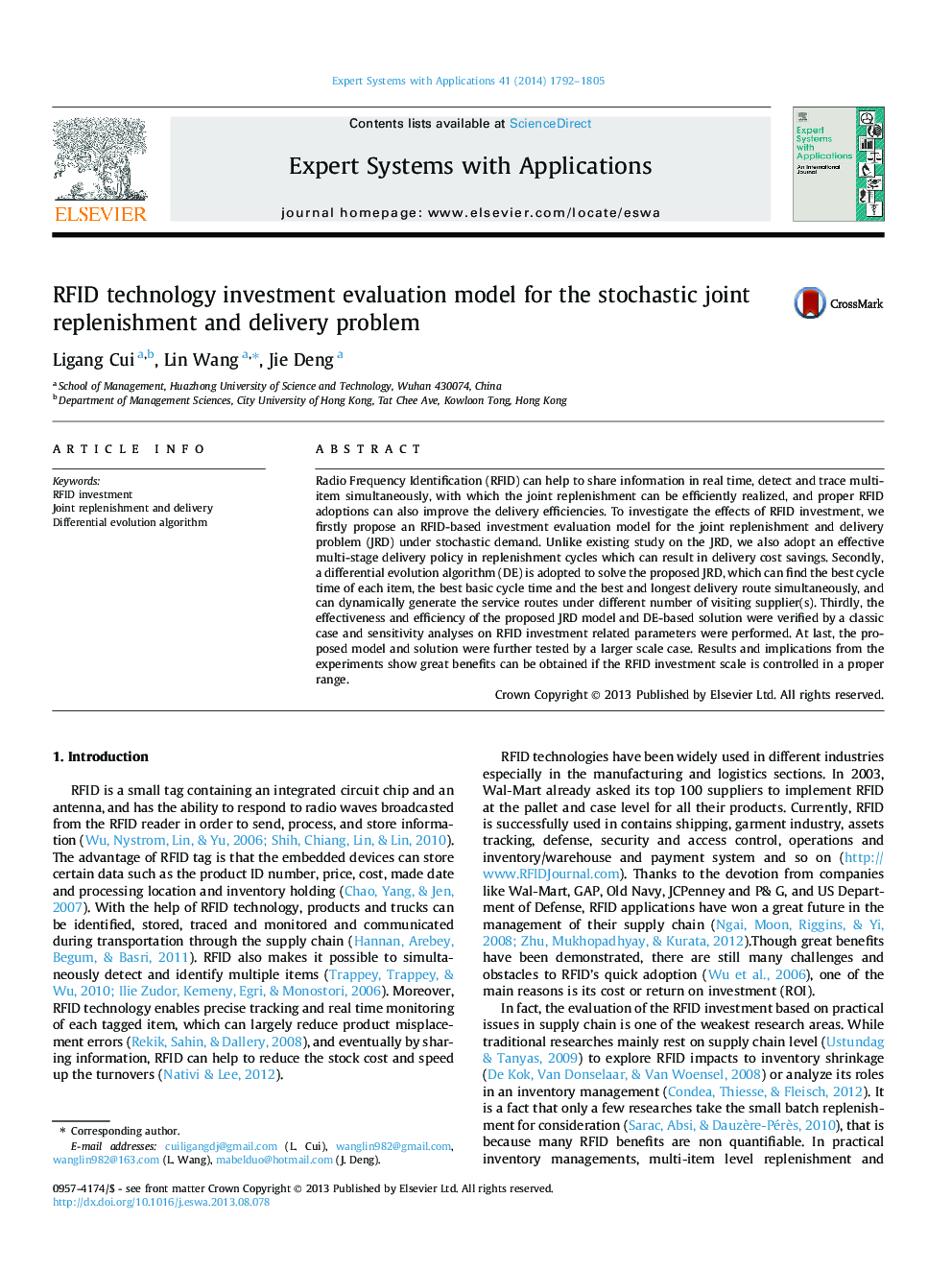| Article ID | Journal | Published Year | Pages | File Type |
|---|---|---|---|---|
| 382504 | Expert Systems with Applications | 2014 | 14 Pages |
•Propose a practical RFID investment based stochastic joint replenishment and delivery model firstly.•Design an effective differential evolutionary (DE) algorithm to find the best cycle time of each item, cycle time and delivery route, simultaneously.•The advantage of RFID-based JRD was verified by comparing with the JRD model without RFID technology.•Experiment results show great benefits can be obtained with the proper RFID investment scale.
Radio Frequency Identification (RFID) can help to share information in real time, detect and trace multi-item simultaneously, with which the joint replenishment can be efficiently realized, and proper RFID adoptions can also improve the delivery efficiencies. To investigate the effects of RFID investment, we firstly propose an RFID-based investment evaluation model for the joint replenishment and delivery problem (JRD) under stochastic demand. Unlike existing study on the JRD, we also adopt an effective multi-stage delivery policy in replenishment cycles which can result in delivery cost savings. Secondly, a differential evolution algorithm (DE) is adopted to solve the proposed JRD, which can find the best cycle time of each item, the best basic cycle time and the best and longest delivery route simultaneously, and can dynamically generate the service routes under different number of visiting supplier(s). Thirdly, the effectiveness and efficiency of the proposed JRD model and DE-based solution were verified by a classic case and sensitivity analyses on RFID investment related parameters were performed. At last, the proposed model and solution were further tested by a larger scale case. Results and implications from the experiments show great benefits can be obtained if the RFID investment scale is controlled in a proper range.
